Stock Market Fundamentals, Valuations, and Technical Trends
Stock-Markets / Financial Markets Dec 09, 2008 - 10:35 AM GMTBy: Chris_Ciovacco

 Long-Term Technicals Continue to Outweigh Valuations - During bear markets investors have to weigh numerous inputs when making asset allocation decisions. From the list below, investors would be well served to place higher weights on housing and the market's technical health. In terms of managing risk in the short to intermediate term, they are more important than valuations or general economic conditions. Stocks will bottom before the economy, but only when we can see some light at the end of the economic tunnel. Housing stabilization is a key component in helping us see the economic light.
Long-Term Technicals Continue to Outweigh Valuations - During bear markets investors have to weigh numerous inputs when making asset allocation decisions. From the list below, investors would be well served to place higher weights on housing and the market's technical health. In terms of managing risk in the short to intermediate term, they are more important than valuations or general economic conditions. Stocks will bottom before the economy, but only when we can see some light at the end of the economic tunnel. Housing stabilization is a key component in helping us see the economic light.
It is impossible for any market to bottom without technical improvement showing up on a chart. As of this writing, the charts tell us to continue to place a high priority on principal preservation. However, some additional gains in many asset markets would provide some reasons for hope.
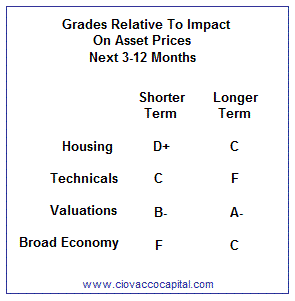
Short-Term Trends Show Some Improvement Over the weekend, President-elect Barack Obama said he would put forth the largest spending package on infrastructure since the 1950s. On another front, legislators are said to have reached an agreement with the Bush administration to bailout the auto companies. It will be important to keep our eye on some key markets in the coming days to see if these latest government announcements can spark a meaningful rally.
Recent moves in many asset markets off the November 20, 2008 lows have only come back to downward-sloping trend lines which started in late September 2008. In Monday's pre-market activity, we are seeing some good signs. The dollar is down. The Yen is down. Oil is up. Gold is up. If we can see some impressive breaks of the September 2008 trend lines, it would be a good first step for the bullish case. However, with the rapid fall in asset prices in recent months, we would expect to see sharp rallies off the lows. It remains to be seen if any of these rallies can hold. With improved valuations, we will keep an open mind. The longer-term trends, illustrated later in this article, are still of concern.
Stock Rally Off Lows Is Nice, But...
The S&P 500's recent rally off the lows is somewhat impressive. However, as of the 12-05-08 close, it appears to be nothing more than a bear market rally. The pink lines show the basic downward-sloping trend channel since 09-19-2008 (see chart below). As of the close on 12/05/2008, the current rally is trying to break the short-term trend (see red circle), but we need to see more. A break of the pink channel would be a positive step and add a little more credibility to the current rally.
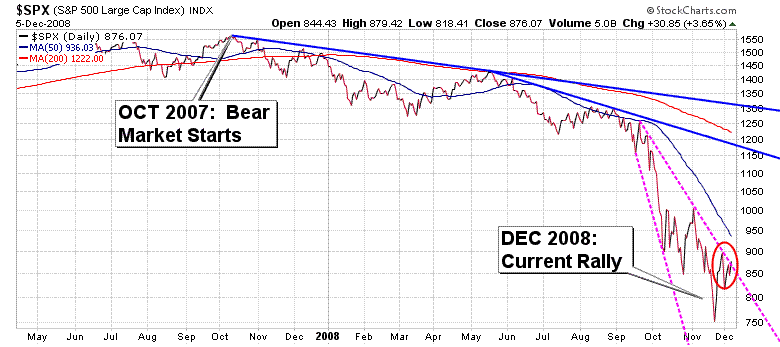
Housing Still a Problem for Credit Markets
Since assets tied to residential housing are causing problems with balance sheets and in turn the credit markets, housing prices remain the primary fundamental area of concern for investors. Based on the latest figures from Case-Schiller, we still have over 9 months of supply of existing or “old” homes on the market (10/2008). At the end of September 2008, 11.4 months of supply of new homes remained on the market. As stated several times in the past, we cannot expect to see any real stability in home prices until we get down to at least 6 or 7 months of supply. Prices of homes will continue to be under pressure, which means more problems for financial institutions.
More problems for financial institutions will mean more problems in the credit markets. Recent liquidity injections and asset swap/purchase programs by the U.S. government will provide some support to housing, but they do not directly address the inventory overhang. Short of bulldozing homes, no government program can directly or quickly correct current inventory imbalances.
Students of market history also know “boom” assets from the last bull market usually lag in the next bull market. Anyone who thinks residential housing is going to be the best place to park capital in the next bull market will probably be mistaken. Investing is always about opportunity costs. Housing will eventually stabilize, but should not offer the best bang for our opportunity cost buck.
Valuations Are Better, But Could Become Even More Attractive On Further Declines
The chart below, from Where Valuations and Technical Support Intersect , shows valuations have improved enough to warrant an open mind about positive outcomes from stocks.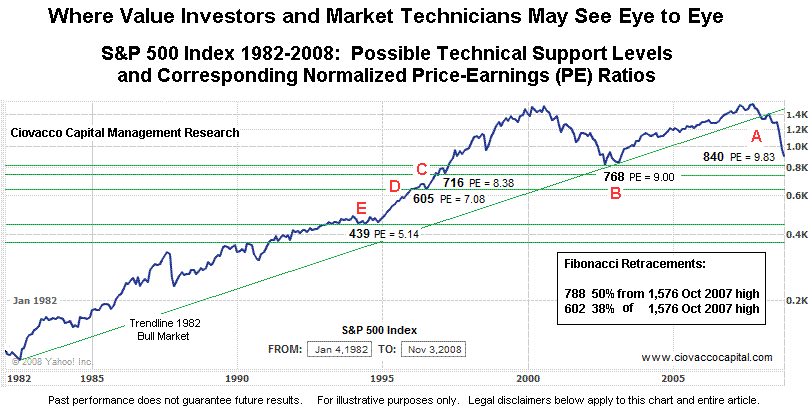
Since the chart above was created, the S&P 500 declined below both 840 and 768. The brief stay below 768 does not rule out the possibility of stocks holding above that level. However, as we will illustrate below, the technical health of the market still needs to show some improvement.
Your Brokerage Statement Will Improve Before the Economic Headlines
In Stocks Will Bottom Well Before The Economy , we discussed the stock market's tendency to bottom several months before economic news improves. Dr. John Hussman looked more broadly at the same concept by reviewing economic and stock market trends during and after bear markets in 1954, 1958, 1961, 1970, 1975, 1980, 1982, 1991, and 2001. His general finding was "regardless of how stocks perform during a recession, the market is nearly always advancing strongly by the time that the recession has three months to go." ( entire Hussman article ). Assuming stocks do not begin a strong advance until the last three months of the current recession, we may not see a bottom in stocks until March or April of 2009. If the recession drags on past the spring of 2009, a bottom in stocks could come even later.
We cannot solely rely on the often quoted Wall Street assumption of “stocks always bottom six months before the economy.” However, based on history, it is a good bet someone looking at charts (a technical analyst) will spot a turn in stocks well before someone reading the Wall Street Journal or writing fundamental research reports (a fundamental analyst). Fundamentals are still important, but they are going to be a lagging indicator for asset prices as this recession comes to a close at some undetermined point in the future.
Long-Term Technical Trends Remain Negative
Since stocks have bottomed at least three months before the end of economic downturns between 1954 and 2001, it is logical to assume we should see some technical improvements in financial markets before better news in housing, employment, and economic output. It is difficult, if not impossible, to review the long-term technical trends in almost any asset market and draw positive conclusions. If anything, a review of long-term trends leaves open the possibility of new lows across almost the full array of risk asset classes. Yes, we have seen some improvement in shorter-term trends, but here we are focusing on longer-term trends. We do not use technical analysis as a forecasting tool. Our technical analysis is more like a car's temperature gauge, which measures current conditions and changes when conditions change. John Maynard Keynes said when replying to a question about monetary policy during the Depression, “When the facts change, I change my mind.” From our investment perspective, when the charts change (show meaningful improvement), we will become more open to putting hard-earned principal at risk.
Relative Strength Leaders A Concern
Bear markets need some industry groups or sectors to lead during the transition back to a bull market. The charts below paint a “good news / bad news” picture. The good news is we have several industry groups that have encouraging relative strength trends using the S&P 500 Index as a basis for comparison. For example, the trends in relative strength of transportation stocks are positive.
Transportation Stocks - Relative Strength (1989-2008)
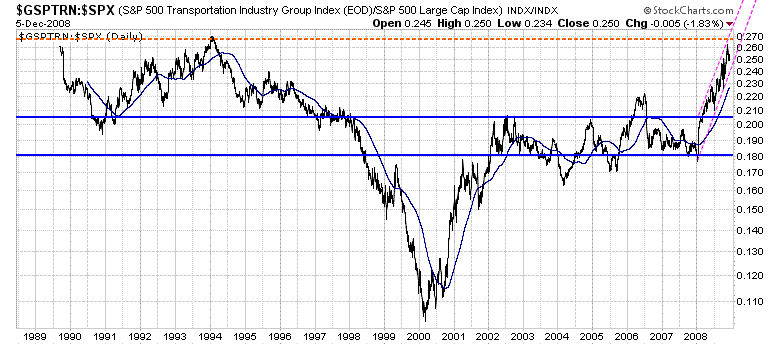
The bad news is even a leading sector of the market is showing weak trends in terms of price. Price, not relative strength, is what really matters to our bottom line.
Transportation Stocks - Price (1989-2008)
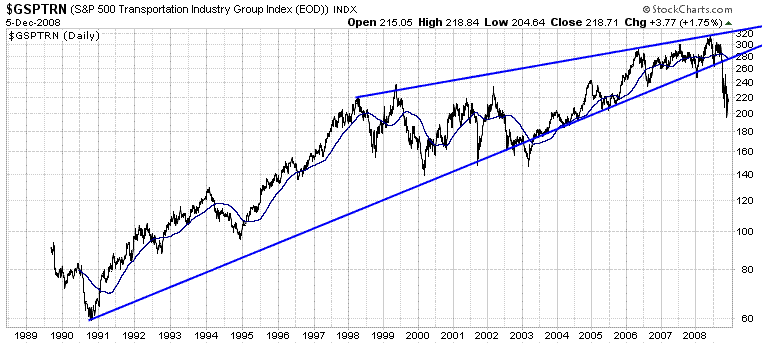
A link to numerous industry group charts showing similar characteristics is at the bottom of this article.
Commodities, Gold, and the Dollar Not Forecasting Inflation/Recovery Yet
Countless government bailouts and liquidity facilities have flooded the financial system with new funds. It is almost universally accepted these practices will be inflationary once the economy and credit markets find some footing. Therefore, it is logical to assume assets that can help protect purchasing power would be in demand if we were on the cusp of an economic recovery. Inflation-protection assets and “weak dollar” assets are not in great demand and remain firmly in downtrends. We would expect oil, gold, and TIPS to show some legs if we could see light at the end of the economic tunnel.
Commodities - CRB Index - Price Trend
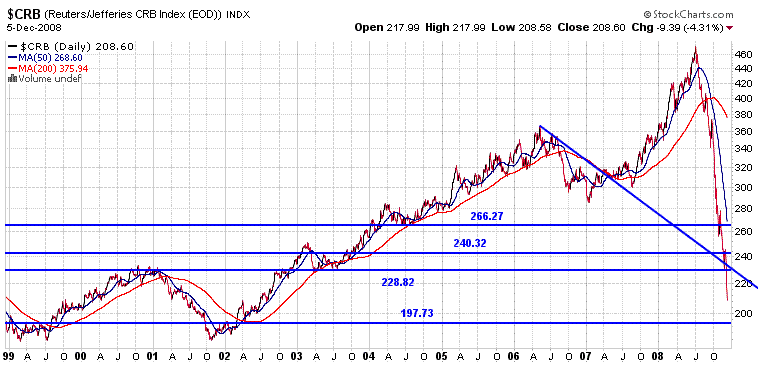
Gold - Price Trend
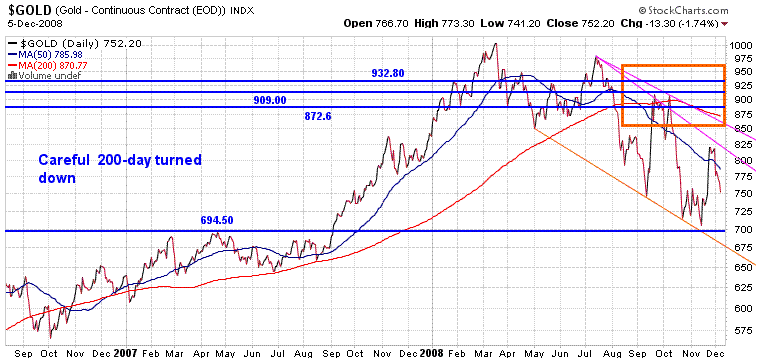
Oil- Price Trend
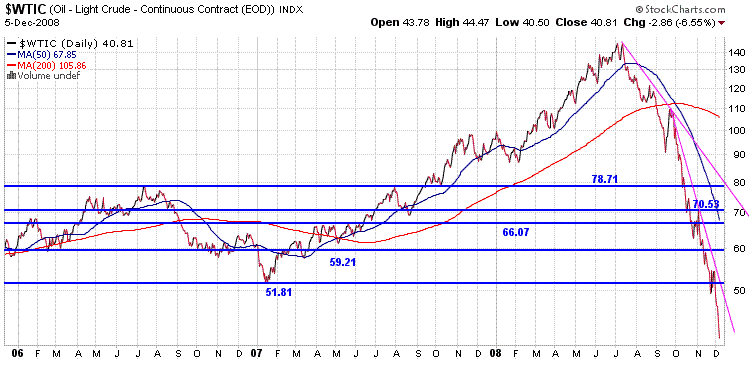
If the current rally can continue, we will see some meaningful improvement in the charts. Many charts have not yet shown even very short-term improvement (see charts of commodities, gold, and oil above). When the appetite for risk returns, we would expect to see rapid and readily apparent reversals in many charts, including the U.S. dollar, oil, and yen. As of Friday's close, the yen and the dollar have done nothing to suggest any radical shift in terms of the risk appetite of investors.
Yen - Price Trend
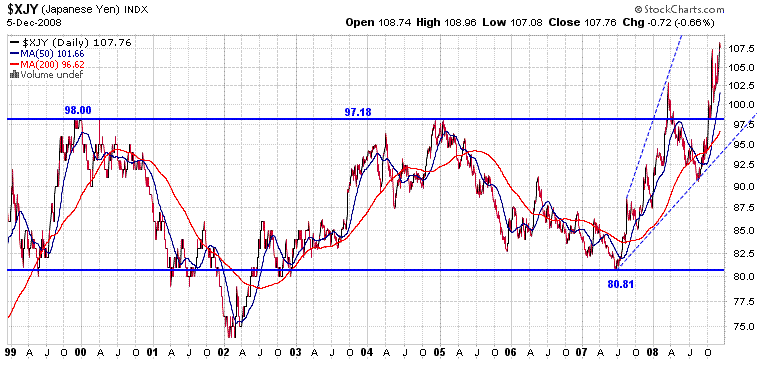
U.S. Dollar Index - Price Trend
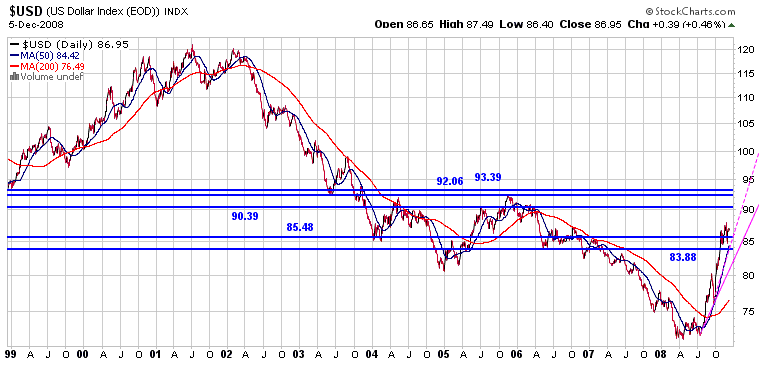
We will continue to monitor developments on both the fundamental and technical fronts. If action is needed (bullish or bearish), we will change when the facts change.
More Industry Group Charts - More Charts...Click Here...Opens New Window
By Chris Ciovacco
Ciovacco Capital Management
Copyright (C) 2008 Ciovacco Capital Management, LLC All Rights Reserved.
Chris Ciovacco is the Chief Investment Officer for Ciovacco Capital Management, LLC. More on the web at www.ciovaccocapital.com
Ciovacco Capital Management, LLC is an independent money management firm based in Atlanta, Georgia. As a registered investment advisor, CCM helps individual investors, large & small; achieve improved investment results via independent research and globally diversified investment portfolios. Since we are a fee-based firm, our only objective is to help you protect and grow your assets. Our long-term, theme-oriented, buy-and-hold approach allows for portfolio rebalancing from time to time to adjust to new opportunities or changing market conditions. When looking at money managers in Atlanta, take a hard look at CCM.
All material presented herein is believed to be reliable but we cannot attest to its accuracy. Investment recommendations may change and readers are urged to check with their investment counselors and tax advisors before making any investment decisions. Opinions expressed in these reports may change without prior notice. This memorandum is based on information available to the public. No representation is made that it is accurate or complete. This memorandum is not an offer to buy or sell or a solicitation of an offer to buy or sell the securities mentioned. The investments discussed or recommended in this report may be unsuitable for investors depending on their specific investment objectives and financial position. Past performance is not necessarily a guide to future performance. The price or value of the investments to which this report relates, either directly or indirectly, may fall or rise against the interest of investors. All prices and yields contained in this report are subject to change without notice. This information is based on hypothetical assumptions and is intended for illustrative purposes only. THERE ARE NO WARRANTIES, EXPRESSED OR IMPLIED, AS TO ACCURACY, COMPLETENESS, OR RESULTS OBTAINED FROM ANY INFORMATION CONTAINED IN THIS ARTICLE. PAST PERFORMANCE DOES NOT GUARANTEE FUTURE RESULTS.
Chris Ciovacco Archive |
© 2005-2022 http://www.MarketOracle.co.uk - The Market Oracle is a FREE Daily Financial Markets Analysis & Forecasting online publication.


